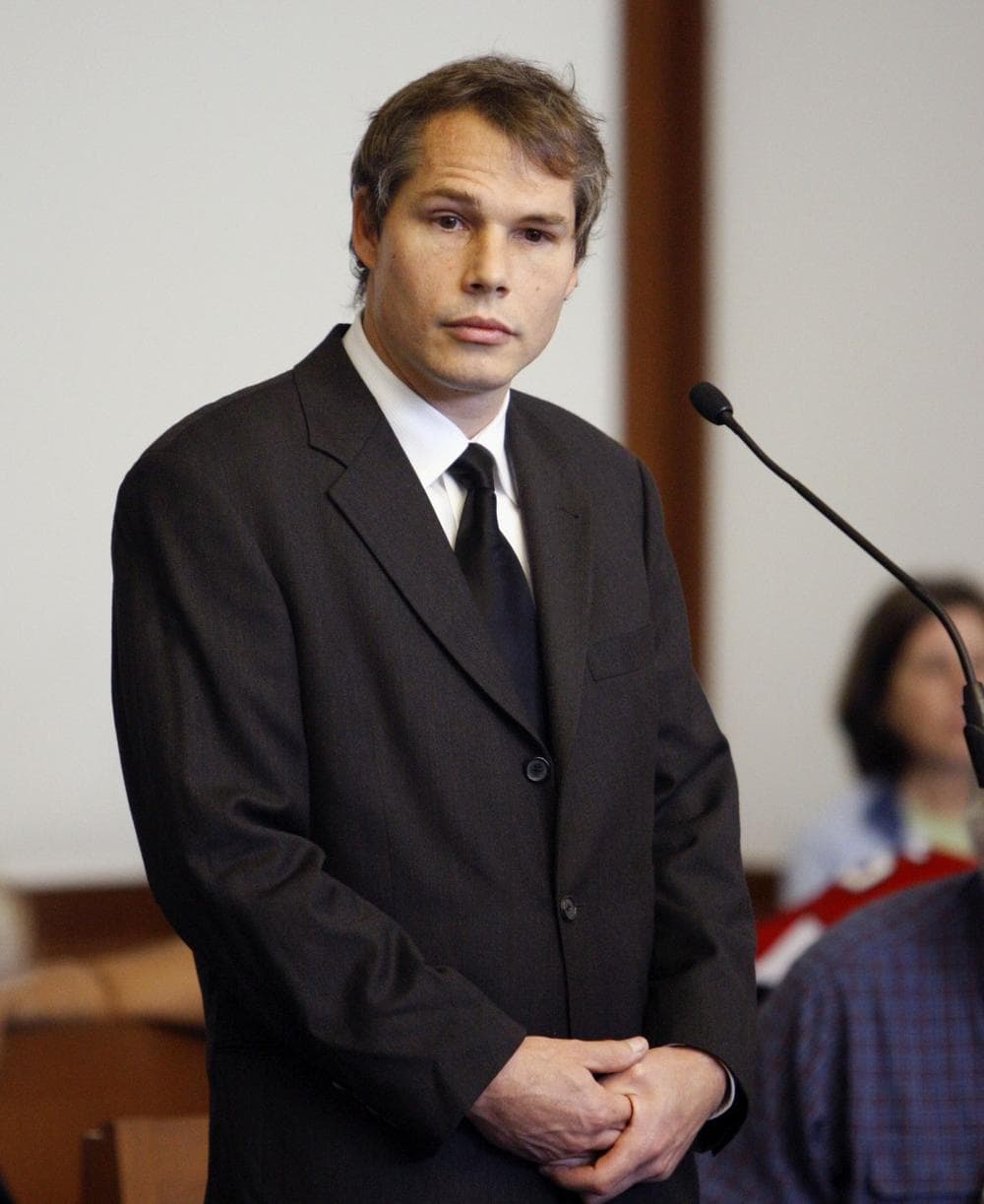Advertisement
Shepard Fairey: No Hard Feelings, Boston

Shepard Fairey’s legal battle with the Boston Police is over. The street artist behind the now iconic “Hope” image of President Obama received two years probation in Boston Municipal Court on Friday.
In an interview with WBUR, Fairey said he’s relieved the battle is over — but he holds no grudges. "I'm very happy that I'm gonna get to make art without this black cloud over my head and do all the positive things that are important to me," Fairey said.
Click "Listen" to hear Shepard Fairey's full interview with WBUR.
Fairey, 39, pleaded guilty to one count of defacing property and two counts of wanton destruction of property. Eleven other charges were dropped.
Fairey was arrested in February when he was in Boston for an event kicking off a solo exhibition at the Institute of Contemporary Art. The arrest came three days after he failed to appear in court on a charge of placing a poster on a Boston electrical box in 2000.
'Just put this behind me and get on with my life'
Under the plea deal, Fairey must pay $2,000 to a graffiti removal organization and cannot carry tagging materials in Boston — such as stickers, posters or wheat paste — except for authorized art installations. He also must tell officials when he plans to visit Suffolk County, where Boston is located.
“In the grand scheme of things, this was the best possible resolution,” Fairey said. “To just put this behind me and get on with my life and not have to go through the torture of trial.”
To fight the charges would have required a further investment of time and money — not to mention stress. “Emotionally it’s been really heavy,” Fairey said. “I have two young daughters and I’m married and I run a business. I have a lot of things to attend to, always.”

And that’s assuming he would have been acquitted. “The possibility of being convicted for a felony charge for putting up a sticker or a poster — it’s crazy,” Fairey said. “And originally they were pushing for what could have amounted to 87 years in prison.”
'A few very, very outspoken people making a lot of racket'
Fairey thinks his arrest reflects an element of conservatism in Boston. “It’s unfortunate that that’s how some people in the Boston Police Department thought that their time and resources should be used,” he said.
He was somewhat taken aback by the anger his street art generated in the city. “People on blog postings saying things like, ‘All taggers should have their hands cut off,’ and things like that,” Fairey said. “First of all, I don’t consider myself a tagger, and I feel like my methodology of integrating my work into public spaces has been with the consideration that we all have to live in our cities.”
But Fairey also sees it as a case of “the squeaky wheel getting the oil” — with a few outspoken anti-graffiti voices in Boston stirring up a disproportionate amount of outrage.
“I think there’s also a lot of people that are really hungry for contemporary art and are progressive, creative people,” he said. “For their needs to be eclipsed by a very vocal minority would be unfortunate, and that’s what I think that we all need to keep perspective on.”
Fairey’s not holding any grudges. The phrase “Banned in Boston” didn’t come out of nowhere, he acknowledges. "It's got its history." But he seems more interested in the idea of “Hope” that that brought him all of this attention in the first place.
“You know the mayor’s office also asked me to do an installation on the side of City Hall,” Fairey said. “The mayor said, ‘Well, you know, I knew this guy was a bit edgy, but I liked what he did anyway.’”
This program aired on July 10, 2009.